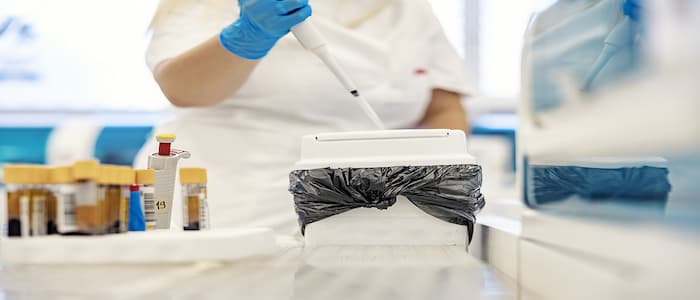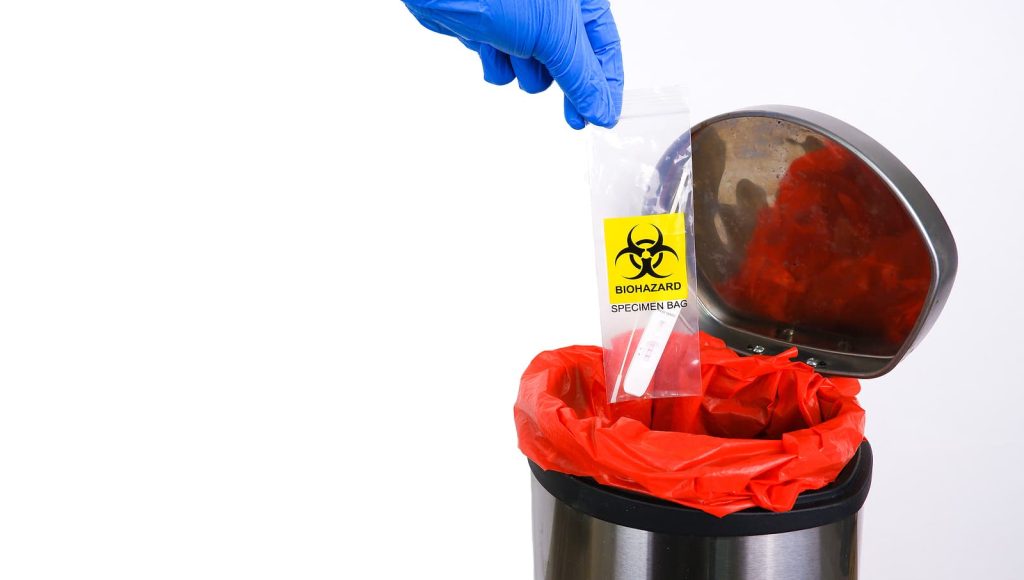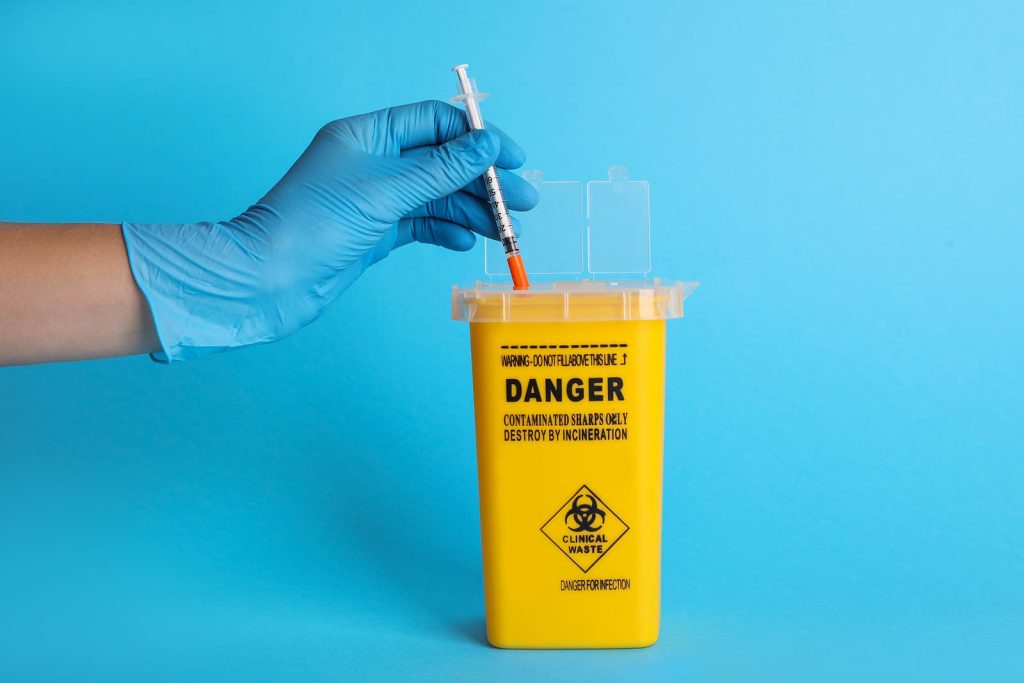What Happens to Medical Waste?

Every medical provider deals with a variety of medical waste. From general to toxic waste, the constant is that it must be disposed of. So what happens to that medical waste once your disposal provider picks it up?
The answer depends on the type. Medical waste comprises 4 main types: general, infectious or hazardous, sharps, and radioactive. These wastes are typically sorted before pickup, as they require different types of disposal.
General Medical Waste
General medical waste isn’t much different than anything a standard office produces on a day to day basis. Paper, plastics, and general office supplies make up most of this category. This type of waste is the easiest to dispose of, and requires no special precautions.
Once the waste is deposited in the proper bin, a disposal provider picks it up and takes it to a landfill or recycling facility, depending on the material.
Infectious and Hazardous Waste
Broadly speaking, infectious waste is any waste that could still spread disease. This waste includes vaccines, products that have come in contact with blood, tissues or body parts removed during a surgery, regulated human body fluids, and waste from laboratories.

The primary method for disposing of infectious waste is steam autoclaving. Waste is locked in a seal chamber, where steam is pumped in at a high pressure, sanitizing the waste. After autoclaving, the waste goes one of two ways. If the product is reusable medical equipment, it will be returned to circulation. If it’s disposable, once it’s autoclaved, it will either go to a landfill or waste-to-energy facility.
The other method is incineration. A disposal provider places the waste in an incinerator, where it’s turned into ash. Ash from medical waste can contain heavy metals or other toxic chemicals, and as a result it is typically sent to sanitary landfills.
Sharps
Needles are likely the first thing that comes to mind with sharps, but they also encompass a number of other devices. Some common ones in a medical setting include syringes, scalpels, capillary tubes, or broken glass from laboratory settings.

Due to their sharp nature, these objects can’t simply be thrown in the trash or in a cardboard box. Containers for these sharps must be puncture resistant.
The process for sharps is essentially the same as hazardous and infectious waste. Most sharps are autoclaved, and then shipped off to a landfill. However, in some jurisdictions, sanitized sharp waste can go to regular landfills – as long as it’s properly sealed. Sharps that can’t be autoclaved are incinerated.
Radioactive Medical Waste
Hospitals deal with a variety of radioactive materials, and the volume is steadily increasing. Radioactive waste should be treated differently than all of the other waste previously mentioned. First, it needs to be sorted into clearly marked containers, where each isotope has its own label. These containers also must be proofed to ensure that the radiation doesn’t escape.
Once the waste is properly stored, there are 4 disposal methods. The least common are incineration and concentrate and contain. Incineration used to be more common, but has faded due to environmental concerns.
Concentrate and contain is used in rare cases where material is either highly radioactive or has a half-life longer than a month, which makes the most common method, delay and decay, impractical. This waste is stored in specially designed and labeled containers, and then buried in designated burial sites.
The two most common disposal methods are dilute and disperse and delay and decay. Dilute and disperse involves low activity solids or liquids that do not exceed 1.35 microcuries.Solid articles under this limit can be disposed of as ordinary waste, and liquid waste can be disposed of in sanitary sewage after rigorous flushing with water. However, safe is better than sorry, and ensure that this is permitted in your location before doing so.
Delay and Decay is the most common, and it’s used for medium radioactive waste where the chemicals have a half life less than a month. The material should be stored in a properly ventilated room with an exhaust system, with a lead shielding level of at least 10HVL. Storage should be maintained for at least 10 half lives.
Once the dose limit is low enough, it can be disposed of through the dilute and disperse method.
Medical Waste Pros can Help
No matter the type of waste you need to dispose of, Medical Waste Pros can help. Call us today at (888) 755-6370 or fill out the form at the top right of the page, and we can connect you to an affordable provider that fits your need within minutes.










